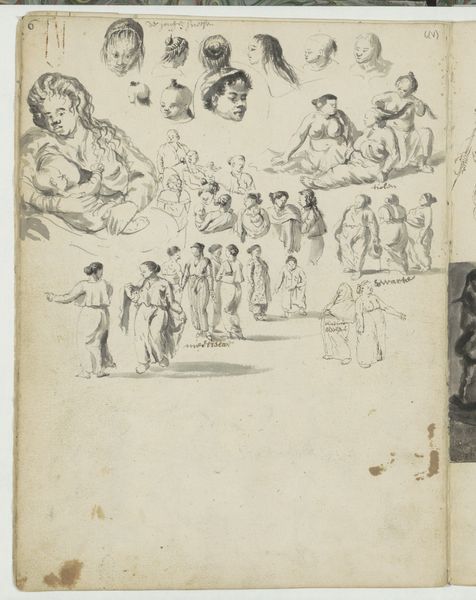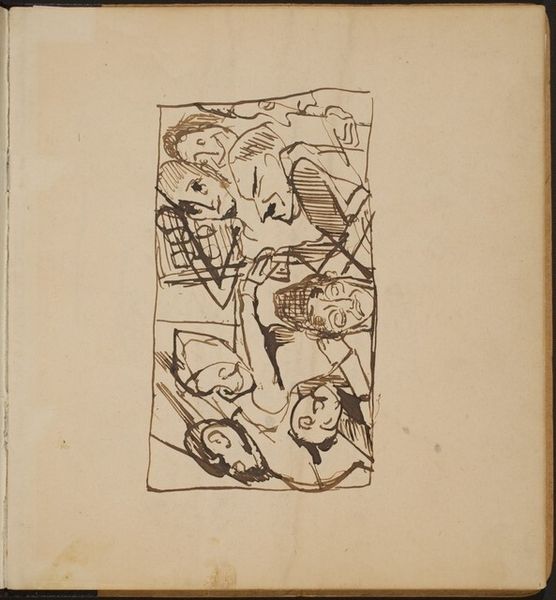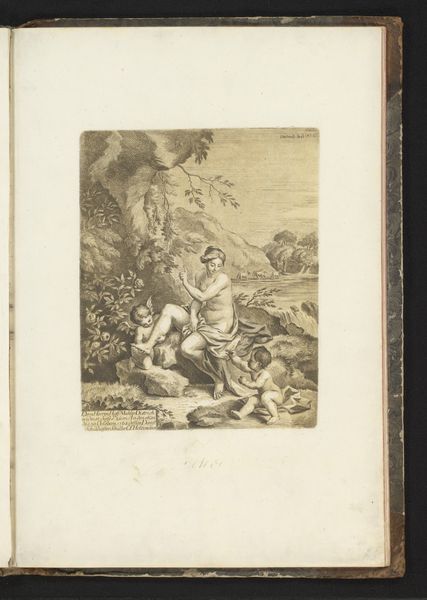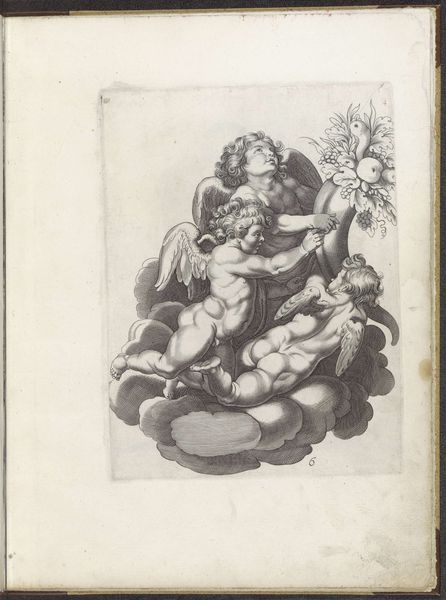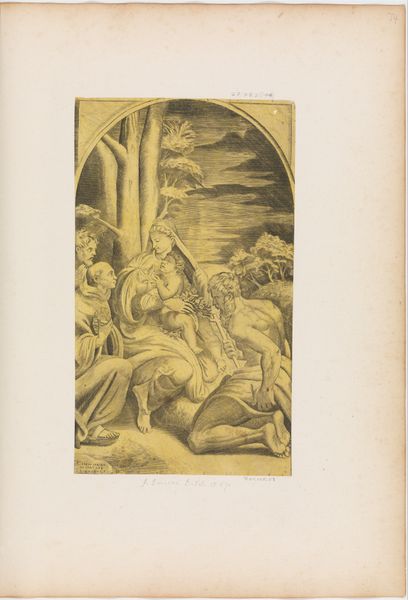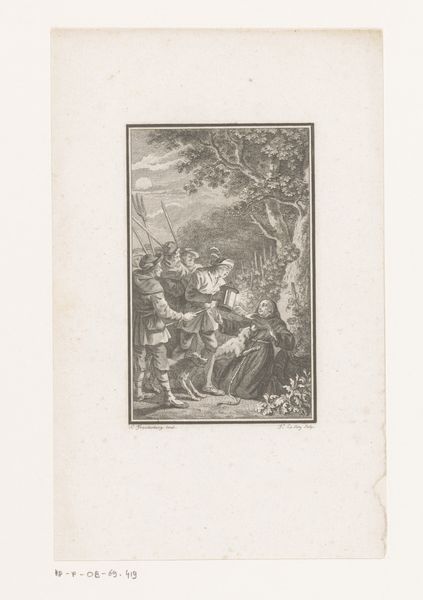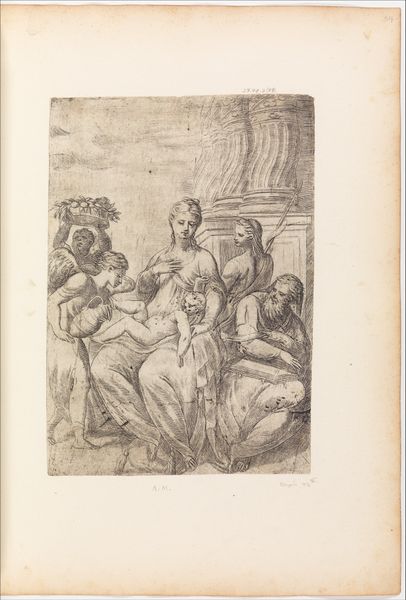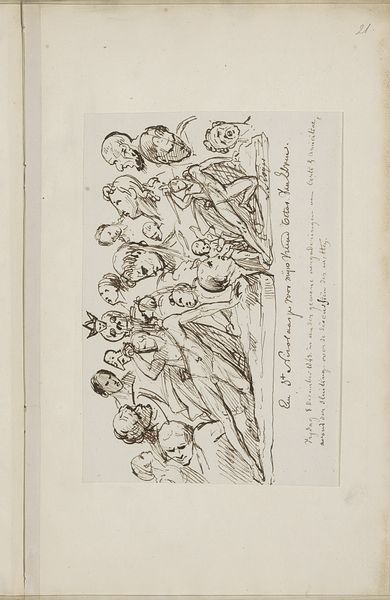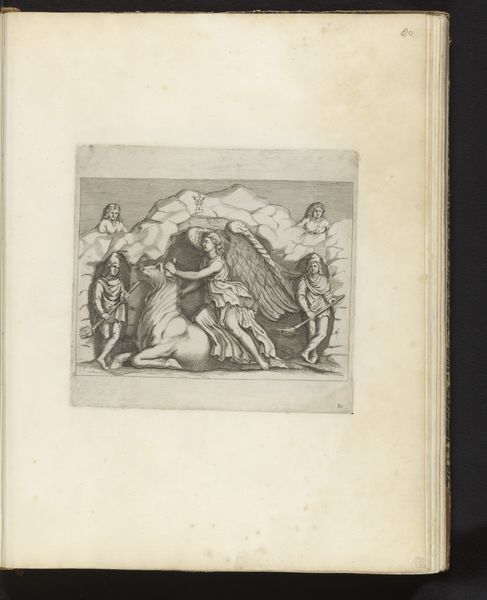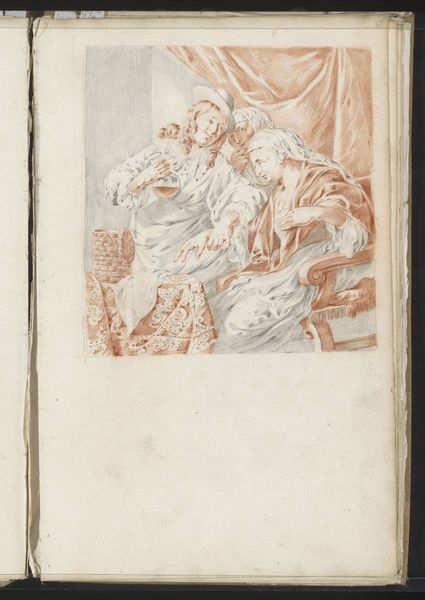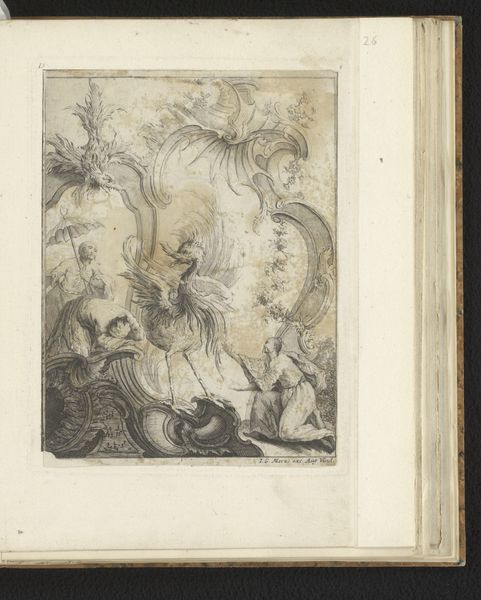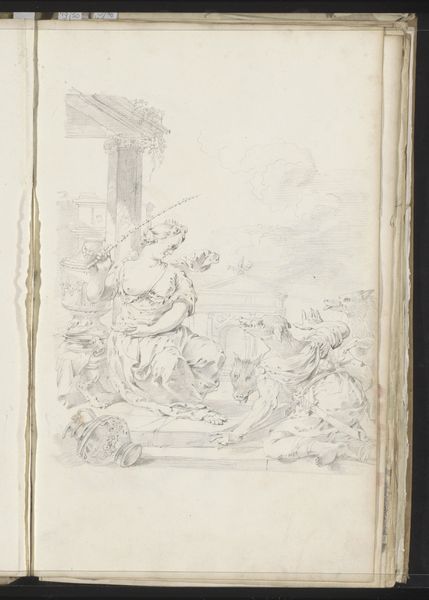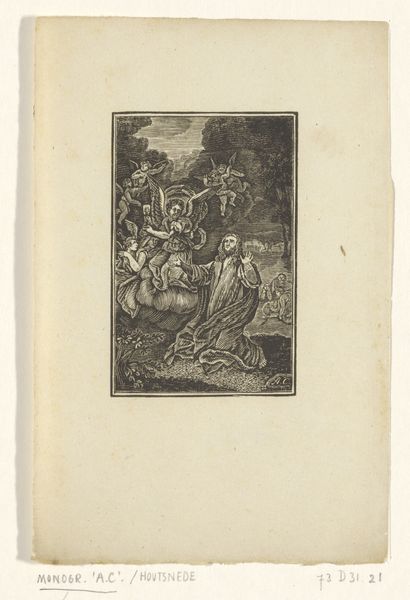
drawing, watercolor
#
drawing
#
aged paper
#
toned paper
#
baroque
#
sketch book
#
landscape
#
figuration
#
personal sketchbook
#
watercolor
#
fruit
#
coloured pencil
#
sketchbook drawing
#
watercolour bleed
#
watercolour illustration
#
sketchbook art
#
watercolor
Copyright: Rijks Museum: Open Domain
Editor: This delicate watercolor drawing, "Putti met een fruitmand in een landschap," made in 1696 by Hendrick van Beaumont, shows these cherubic figures seemingly tumbling through a dreamlike landscape. I'm struck by the loose quality of the sketch, the sense of spontaneity. What’s your read on this piece? Curator: This work is quite evocative. Think about the role of the Baroque artist within a social structure governed by wealthy patronage. These types of sketches were not merely idle musings but also proposals, or studies for grander commissions that would solidify the artist’s reputation, and, perhaps more crucially, provide their living. Note the positioning of the figures within this constructed "landscape." Do you see any socio-political commentary embedded in that idealized scene? Editor: Hmmm...not immediately, but the way they are positioned makes me think about their accessibility to the general public. Their gestures do not invite closeness. Curator: Precisely! Consider how this idealized vision, replicated in numerous decorative objects, reaffirmed and circulated particular concepts about beauty, wealth, and power among the upper classes. By extension, it tacitly defined those who were excluded from it. What appears as innocent whimsy plays a specific, deliberate role in maintaining an order. Editor: That’s a very interesting point, the way even seemingly innocuous imagery can be tied to the politics of its time. I now perceive a constructed view rather than simple artistic exercise. Curator: Indeed. Remember, every image operates within a matrix of power. Examining *who* gets to represent *what*, and *for whom*, unveils complex histories. Editor: This has made me think quite differently about the artworks, I will rethink these concepts. Curator: Absolutely, and it enriches our experience by deepening our engagement.
Comments
No comments
Be the first to comment and join the conversation on the ultimate creative platform.
